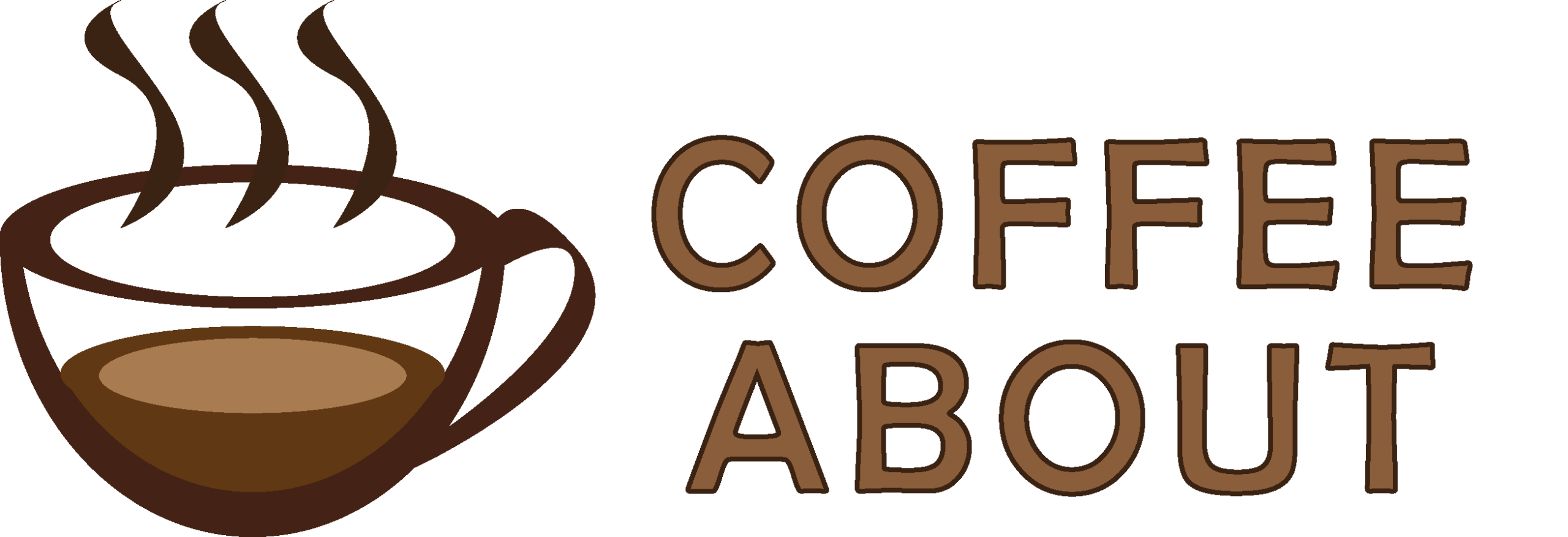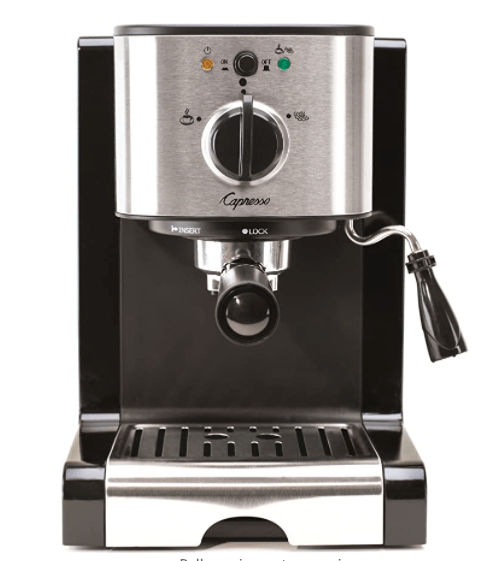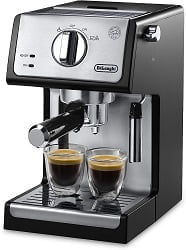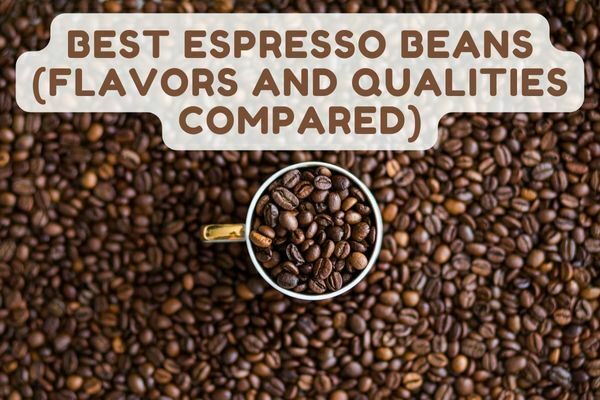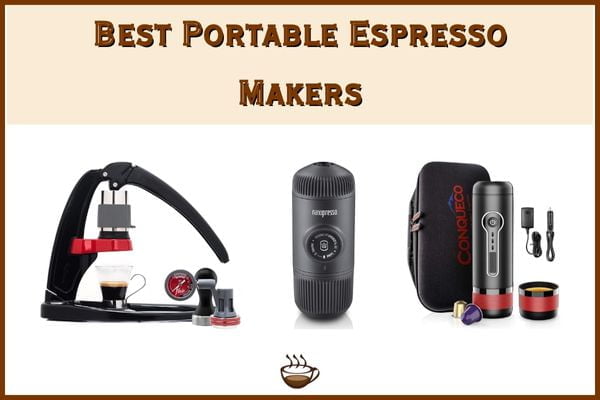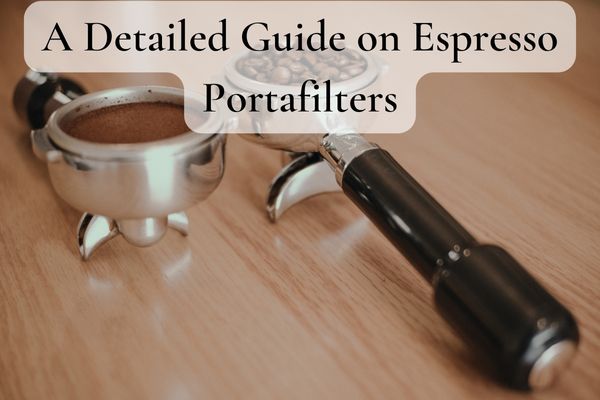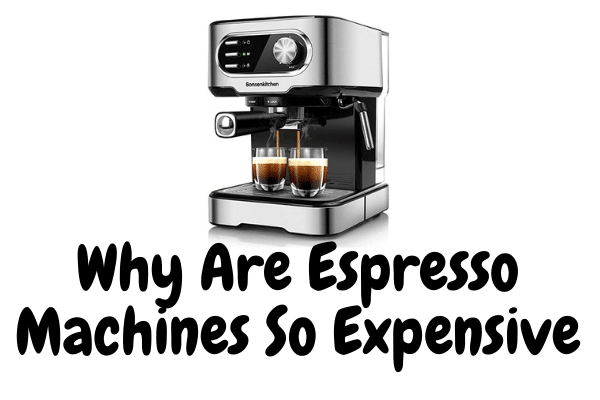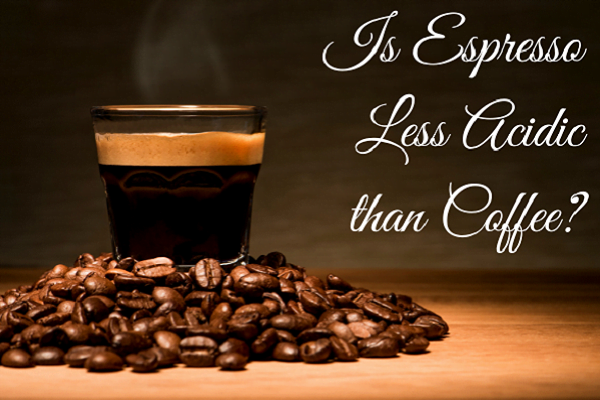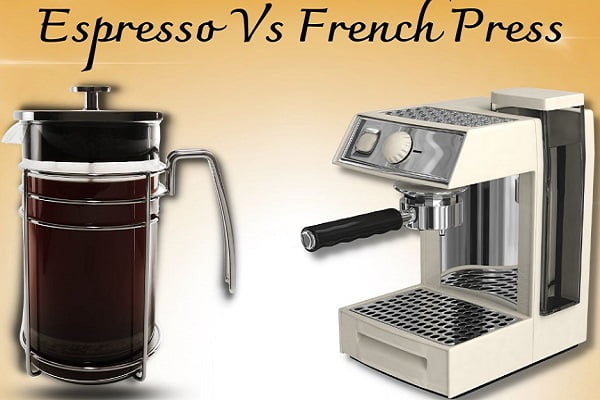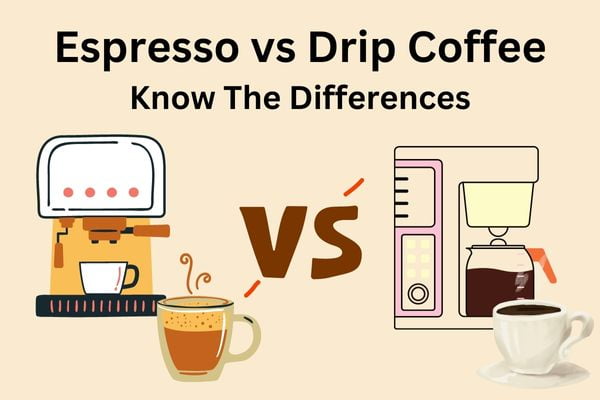All you Wanna know about Espresso
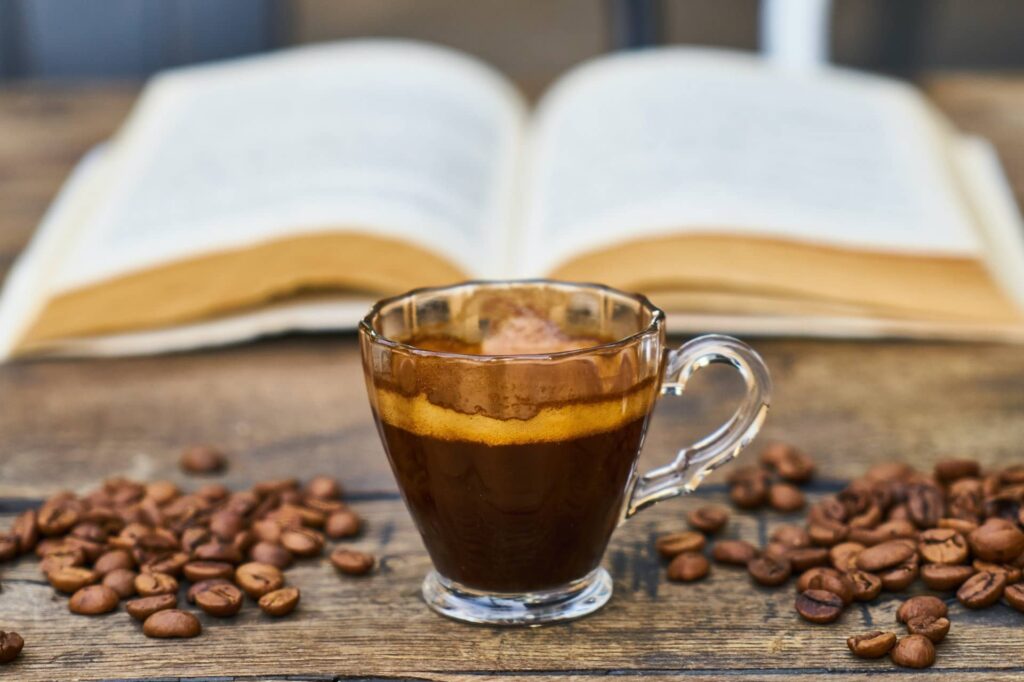
Espresso is a unique coffee brewing method that involves passing hot water under high pressure through finely ground coffee. This yields a small but intense shot with thick crema and complex flavors compared to other brew methods.
Espresso originated in Italy and has become one of the world’s most beloved methods of coffee preparation. I’m sure every coffee aficionado on the planet has enjoyed espresso in some form or another. After all, many favorite coffeehouse drinks like cappuccinos, lattes, and macchiatos are crafted by pouring foamed milk or other flavorings over a freshly pulled espresso shot. The influence of Italian espresso spans the globe.
Espresso is renowned for its rich and bold flavors and stands as the most concentrated form of coffee. It is a preferred choice for those seeking a potent and ultra-caffeinated coffee experience.
The pressurized brewing process of espresso creates a thick, foamy layer on top of the shot called crema. Crema is a hallmark of espresso and indicates its freshness and quality.
Espresso is a versatile beverage that can be enjoyed in a variety of ways. You can drink espresso straight on its own, you can dilute it with water to create an Americano or long black or you can add milk to prepare cappuccinos or lattes. In fact, there are 30 different types of Espresso based drinks.
History of Espresso
Coffee was a booming business in early 19th century Europe, with cafés serving this flavorful beverage spreading all over the cities. But at that time, traditional brewing methods took anywhere from 15 to 30 minutes, leaving customers with long wait times for a cup of coffee.
Seeing an opportunity in this situation, many researchers started to try new and faster ways of brewing coffee.
Angelo Moriondo invented the first steam-driven coffee machine, which could generate steam at 1.5 bars of pressure and use both water and steam to brew coffee in bulk. Moriondo invented espresso-type machines, but he was not a skilled marketer, so his design did not become widely popular.
This machine’s ability to brew a shot of espresso in seconds made it popular. However, its popularity was limited to a few Italian cities due to its lack of pressure relief valves and flame heating, which made temperature and pressure control difficult, resulting in inconsistent tasting shots.
This machine could only generate a pressure of 2 bars, which is far less than today’s standards of 9 bars. The first person to surpass the pressure of 2 bars was Gaggia. He invented the lever-type manual espresso machine, which could generate controlled pressure of 9-10 bars. This high brewing pressure allowed Gaggia’s invention to form a layer of crema over the espresso shot enhancing the aroma and visual appeal.
In 1948, Ernesto Valente invented the famous semi-automatic Faema E61. The design of this machine was very similar to the Espresso machine, that is in use nowadays. After the invention of Valente, Espresso became popular first across Italy and then the whole of Europe.
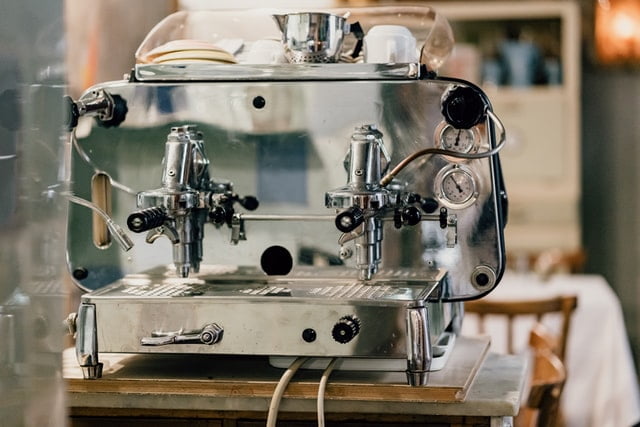
What’s the difference between Espresso and Coffee?
Espresso is simply a shot of coffee prepared with a special pressurized brewing method. It differs quite a bit different from regular drip coffee in serving size, flavor quality, and brewing method.
1. Brewing Method
The biggest difference between regular coffee and espresso comes down to the brewing method.
The drip coffee brewing method involves pouring hot water over ground coffee in a filter, allowing gravity to pull the water through the grounds. This produces a cup of coffee with a dissolved coffee solids content of 1.2-1.5%.
In contrast, espresso uses sophisticated machinery to generate 9+ bars of pressure to force hot water through the coffee grounds. This results in a thick, concentrated coffee with a dissolved solids content of 8-12% in a small (25-30ml) serving.
2. Time for brewing
The other difference is time-saving. It takes just seconds, around 20-30, to pull a shot of espresso while drip coffee methods take 5-10 minutes for water to drip through the grounds.
3. Flavors and Taste Profile
Espresso delivers a strong, full-bodied taste and thick texture, making it a favorite for those craving an intense coffee flavor. Drip coffee, in contrast, has a clean, lively taste with delicate floral and citrusy notes, appealing to those who enjoy a more refreshing, nuanced cup.
4. Caffeine Content
While an espresso shot is lower in total volume, it packs almost the same caffeine as a typical cup of drip coffee and the caffeine per once is way higher in Espresso. A solo 1-ounce espresso contains approximately 60-72mg of caffeine, whereas an 8-ounce drip coffee has 85-120mg of caffeine.
5. Beans and the Grind size
Espresso is brewed with finely ground coffee and dark to medium-dark roasts, also known as espresso roasts. This combination allows for the quick and efficient extraction of the coffee flavors.
Regular coffee is brewed with a coarser grind, similar to granulated sugar, as the brewing process is slower. This allows the light or medium roast coffee beans to retain their original fruity flavor profile.
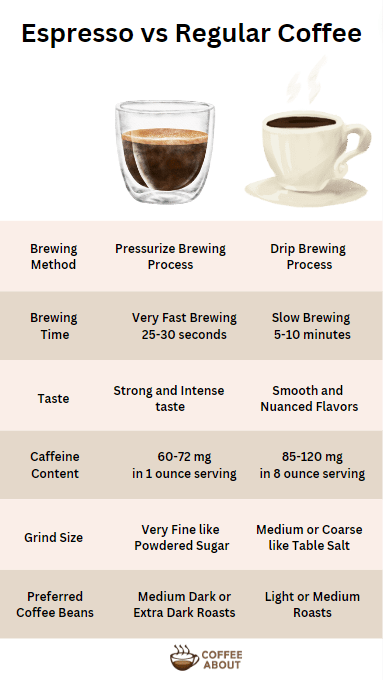
How to brew a perfect shot of Espresso
Brewing a perfect shot of Espresso is not easy; you need quality coffee beans, grind them to the perfect size, you must know how to operate the espresso machine properly and indeed you have to follow expert brewing tips, which I am going to share with you.
Step 1) Clean the portafilter
First, thoroughly clean the portafilter with hot water and dry it completely with a clean cloth. No traces of coffee grounds from the previous brew should remain.
Step 2) Grind the coffee beans
If you have a super-automatic Espresso machine, you don’t need to bother; the machine will automatically do this step for you. For everyone else, grind your coffee beans to fine settings.
You can also use pre-ground coffee, but it’s not recommended if you really want fresh flavors.
The ideal ratio for brewing espresso is 1:2, meaning 1 gram of coffee for every 2 grams of water. This translates to 7-9 grams of coffee for a single shot and 16-18 grams for a double shot.
Step 3) Fill the portafilter
Now fill the portafilter with coffee grounds and level off the surface with your fingers.
Note: There are separate portafilter baskets for single and double shots and you can’t interchange them
Step 4) Tamp the coffee grounds
Use a tamper to apply firm, even pressure, and compress the grounds into a perfectly level puck. This proper tamping technique ensures water flows through the coffee uniformly during brewing.
If the grounds aren’t properly tamped and leveled, the espresso channeling will take place and you’ll likely end up with an imbalanced espresso shot.
Step 5) Insert the portafilter into the machine
Now insert the portafilter into the Group Head of the Espresso machine and start brewing immediately.
Step 6) Note the brew time
Take note of the volume and brew time of your shot. Generally speaking, if you achieve the desired volume within 25-30 seconds, your shot is likely to be well-extracted and flavorful.
If the espresso flows out too quickly, in less than 18 seconds, it will be watery and underdeveloped. This could be due to an incorrect dose, insufficient tamping, or the use of coarsely ground coffee.
If your espresso is taking more than 30 seconds, it will be foamy and extremely bitter. This could also be due to an incorrect dose, insufficient tamping, or using the wrong grind size, such as extra fine coffee grounds.
Read a guide on Dialing in the Espresso machine
Step 7) Drink the shot right away
Savor your espresso shot right away. As time passes, the crema will disappear, and the shot will become stale and increasingly bitter.
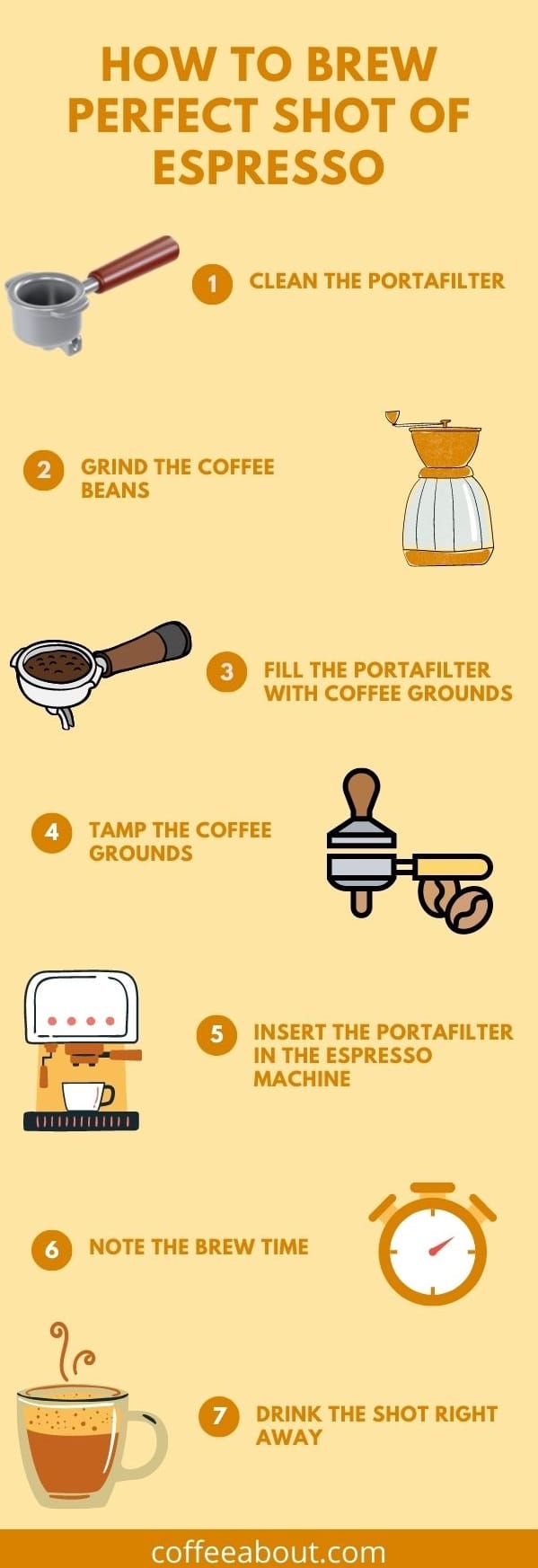
How to drink Espresso
To truly appreciate the flavors of espresso, you must learn to drink it properly. Here is the proper way to drink Espresso to savor its heavenly flavors.
1. Take a sip of water
In many fancy restaurants, they serve sparkling water or simple water with a shot of Espresso. Well, there is a purpose of serving water with Espresso.
Sipping water before drinking espresso refreshes your palate and eliminates any lingering flavors from previous food or drinks, enabling you to appreciate the nuanced flavors of espresso fully.
2. Skim or Stir the Crema
The freshly brewed shot of Espresso has a beautiful caramel-colored layer of Crema over it. The taste of this layer is not as good as it looks; it’s very bitter.
Some people recommend skimming off this layer, while some recommend stirring it in the cup.
While skimming the crema reduces bitterness, it also removes oils that add taste complexity. If you enjoy espresso’s natural balance of rich, bitter notes, it’s best to gently stir the crema back in rather than skimming it.
However, if you find the bitterness to be overpowering, skimming the crema layer may be a better option for you.
3. Sip and Enjoy
Now it’s time to feel the wonderful flavors of Espresso. Finish your shot by taking 1-3 sips and enjoy the aftertaste of Espresso.
Don’t let it sit for very long otherwise the espresso shot will go bad with time.
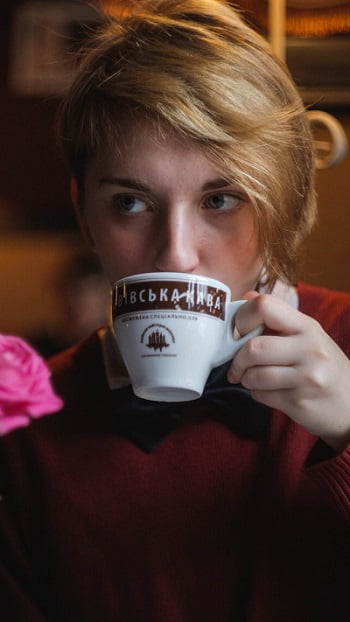
What are the benefits of Espresso
Apart from being delicious, Espresso also has many health benefits.
1. Boosts your Energy level
Espresso provides a quick energy boost due to its concentrated caffeine content, leading to increased alertness and mental clarity.
2. Helps in Weight loss
Espresso can aid in weight loss by boosting metabolism and providing a low-calorie energy boost. Its caffeine content also help suppress appetite and increase fat oxidation, potentially supporting weight loss efforts.
3. Lower Risk of Diseases
Espresso is rich in antioxidants and some studies link coffee consumption with reduced risk of diseases like diabetes, dementia, stroke, and heart and liver disease.
4. Improve your Focus and mood
The caffeine in espresso stimulates the release of neurotransmitters like dopamine. This boost in dopamine sharpens attention span, and motivation, and improves mood.
5. Strengthening long-term memory
Espresso increases attentiveness and aids in improving long-term memory.
Read a detailed guide on Health benefits of Espresso
Espresso buying guide
Espresso Machines are generally very expensive and you have to invest more than 500 dollars if you really want a good machine. There are, however, some good semi-automatic machines that can brew perfect shots for less than $150. Check out the detailed review of these machines. I must say these are perfect for beginners.
Capresso EC 100 Review
Capresso EC100 Coffee and Cappuccino Maker is a great budget-friendly machine. It is very easy to use and has a very simple interface.
Best Espresso Beans
Selecting the right coffee beans for brewing Espresso is essential. Because, without the right beans, even the best coffee machine wouldn’t pull the perfect Espresso Shots.
Interesting Guides on Espresso
Types of Espresso Machines
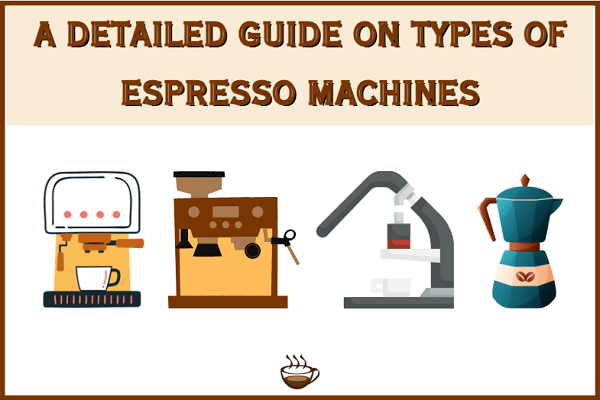
There are 15 different types of Espresso machines from simple and inexpensive models to more intricate and costly units. This guide will help you to choose the best machine for your needs.
How Much Pressure for Espresso
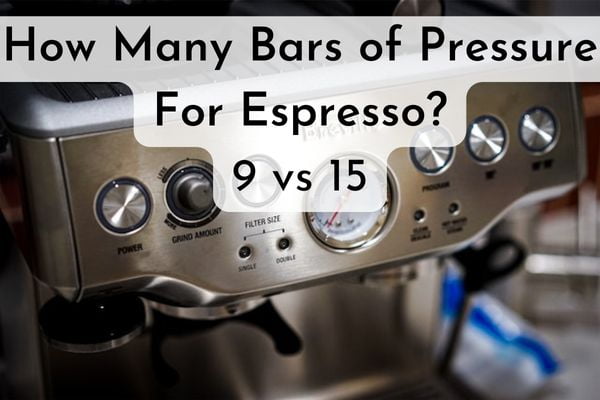
The Best Pressure for brewing Espresso is 9-10 bars. In this guide, I have explained how the change in pressure can affect the extraction and how it changes the quality and texture of Espresso.
Espresso Compared to Other Coffee Makers
Espresso vs Moka Pot
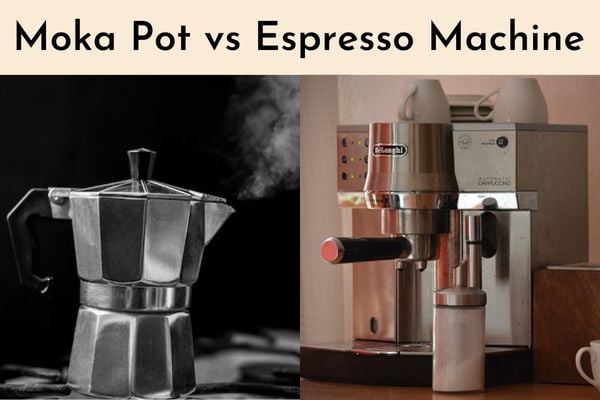
Moka Pot is also known as a Stovetop Espresso maker and it brews a really strong cup of coffee. However, the Moka Pot is not as concentrated as Espresso and it doesn’t have the Crema Layer.
Espresso Brewing Problems and Guides
Why is my Espresso Watery
Watery espresso can be caused by using the wrong grind size, the wrong amount of coffee, or the incorrect tamping technique. I have discussed how you can fix these issues in the following article.
Why is my Espresso Foamy
Your espresso becomes excessively foamy if you use extra dark roasted or extra fresh coffee beans, grind the beans too finely, or run the machine at a very high pressure.
How to Tamp Espresso
Tamping is the most crucial step in Espresso brewing and it can literally make or break your shot. I have discussed the tamping technique in the following guide so you can master it easily.
Why My Espresso Puck is Wet
The top reasons why your Espresso puck is too wet are using uneven or wrong grind size, and not distributing the coffee grounds properly in the portafilter. I have discussed how you can fix these issues.
Why is Espresso Bitter
The primary cause of bitter espresso is over-extraction, which can be caused by using too finely ground coffee beans, dirty equipment, or old or poorly roasted coffee beans.
Water Temperature for Espresso
Espresso is best brewed between 195°F and 205°F. In this guide, I have discussed how you can adjust the temperature of your machine and why it is important.
Espresso without a Machine
While a traditional espresso machine is essential for brewing authentic espresso, there are some manual methods that can produce a strong Espresso-like coffee.
